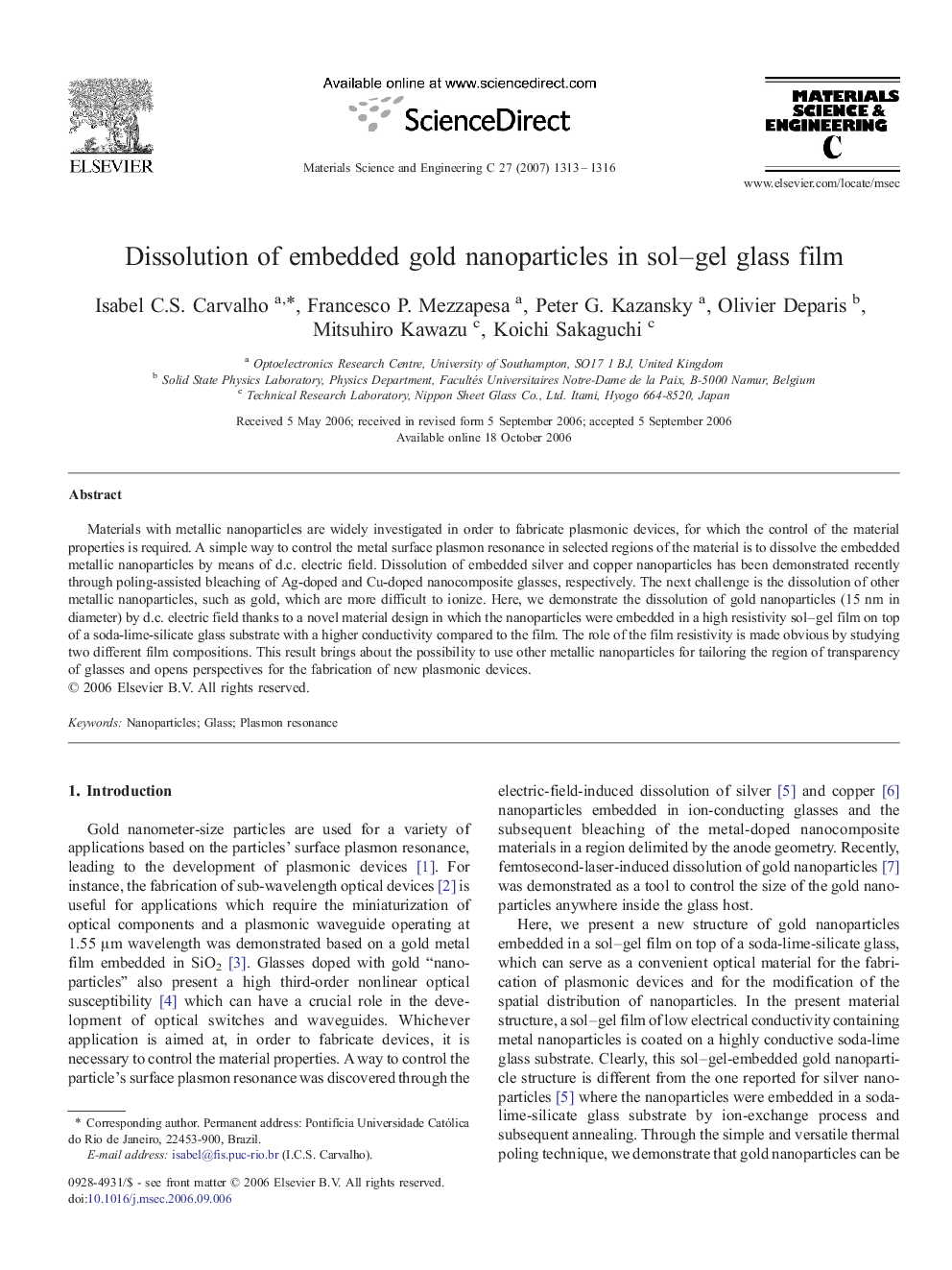| Article ID | Journal | Published Year | Pages | File Type |
|---|---|---|---|---|
| 7870900 | Materials Science and Engineering: C | 2007 | 4 Pages |
Abstract
Materials with metallic nanoparticles are widely investigated in order to fabricate plasmonic devices, for which the control of the material properties is required. A simple way to control the metal surface plasmon resonance in selected regions of the material is to dissolve the embedded metallic nanoparticles by means of d.c. electric field. Dissolution of embedded silver and copper nanoparticles has been demonstrated recently through poling-assisted bleaching of Ag-doped and Cu-doped nanocomposite glasses, respectively. The next challenge is the dissolution of other metallic nanoparticles, such as gold, which are more difficult to ionize. Here, we demonstrate the dissolution of gold nanoparticles (15Â nm in diameter) by d.c. electric field thanks to a novel material design in which the nanoparticles were embedded in a high resistivity sol-gel film on top of a soda-lime-silicate glass substrate with a higher conductivity compared to the film. The role of the film resistivity is made obvious by studying two different film compositions. This result brings about the possibility to use other metallic nanoparticles for tailoring the region of transparency of glasses and opens perspectives for the fabrication of new plasmonic devices.
Keywords
Related Topics
Physical Sciences and Engineering
Materials Science
Biomaterials
Authors
Isabel C.S. Carvalho, Francesco P. Mezzapesa, Peter G. Kazansky, Olivier Deparis, Mitsuhiro Kawazu, Koichi Sakaguchi,
